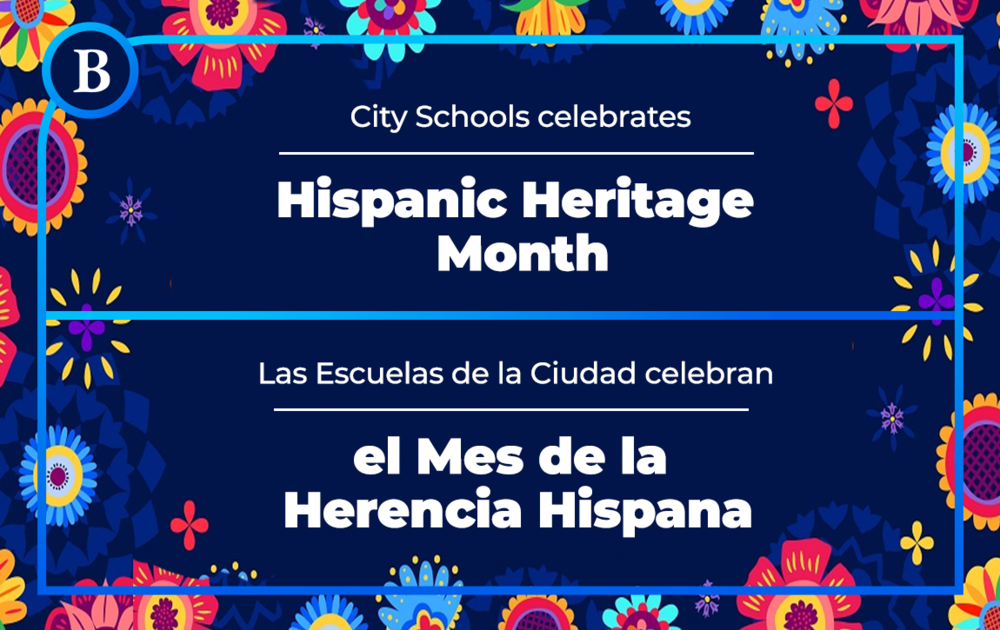
Baltimore City Public Schools celebrates Hispanic Heritage Month, observed from September 15 to October 15. This month recognizes the histories, cultures, and contributions of Americans whose ancestors came from Spain, Mexico, the Caribbean, and Central and South America. In Baltimore, Hispanic and Latino students, families, and staff enrich our schools with language, tradition, and culture, shaping the life of our country, state, city, and classrooms. City Schools honors this heritage and the many ways it continues to strengthen our community, past and present.

Hispanic Heritage Month began as a commemorative week introduced in 1968 by California Congressman George E. Brown. Brown wanted to acknowledge the significant contributions made by individuals in Hispanic communities throughout American history.
On September 17, 1968, Congress passed Public Law 90-48, authorizing the President to issue annual proclamations declaring September 15 to 16 as the start of National Hispanic Heritage Week. The law called on “the people of the United States, especially the educational community, to observe such week with appropriate ceremonies and activities.” That same day, President Lyndon B. Johnson issued the first presidential proclamation for Hispanic Heritage Week.
The week was expanded to a month on September 14, 1989, when President George H.W. Bush (who had been a sponsor of the original Hispanic Heritage Week resolution while serving in the House in 1968) became the first president to declare the 31 days from September 15 to October 15 as National Hispanic Heritage Month.
The date is significant because it coincides with the Independence Days of several Latin American nations: Costa Rica, El Salvador, Guatemala, Honduras, and Nicaragua. Mexico declared its independence from Spain on September 16, 1810, and Chile followed on September 18, 1810. Belize also marks its independence during this period, having declared independence from Great Britain on September 21, 1981.

Read more about Hispanic Heritage Month:

Books to read during Hispanic Heritage Month:

Elementary
Islandborn – Junot Díaz (Ages 5–8)
Dreamers – Yuyi Morales (Ages 4–8)
Carmela Full of Wishes – Matt de la Peña (Ages 4–8)
Where Are You From? – Yamile Saied Méndez (Ages 4–8)
Sofia Valdez, Future Prez – Andrea Beaty (Ages 5–8)

Middle School
Merci Suárez Changes Gears – Meg Medina (Ages 10–14)
Stella Díaz Has Something to Say – Angela Dominguez (Ages 8–12)
The First Rule of Punk – Celia C. Pérez (Ages 10–14)

High School
Mexican Whiteboy – Matt de la Peña (Ages 14–18)
I Am Not Your Perfect Mexican Daughter – Erika L. Sánchez (Ages 14–18)
The House on Mango Street – Sandra Cisneros (Ages 13–18)
We Were Here – Matt de la Peña (Ages 14–18)
For teachers:
National Museum of the American Latino Hispanic Heritage Month Resources
National Park Services – American Latino Heritage Theme StudyCommon Sense Media - Free Learning Resources for Hispanic Heritage Month
 Did you know?
Did you know?
The official Spanish translation of "The Star-Spangled Banner" is titled "El Pendón Estrellado" and was commissioned by the U.S. State Department in 1945 for President Franklin D. Roosevelt's "Good Neighbor Policy" to foster good relations with Latin America. The translation was completed by Peruvian composer Clotilde Arias, who was tasked with creating a version that could be sung to the original tune, a feat she accomplished with a translation considered faithful to the English original. Listen to it here.
Is your school or student celebrating Hispanic Heritage Month? Share the story and photos with us through our City Schools Good News form.
Created by City Schools with assistance from AI.

